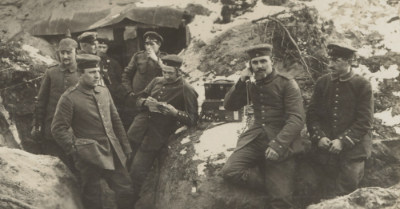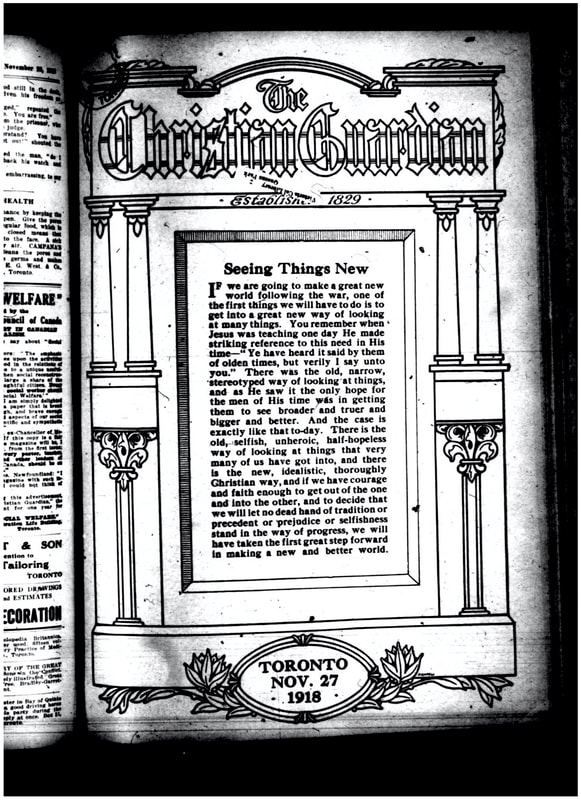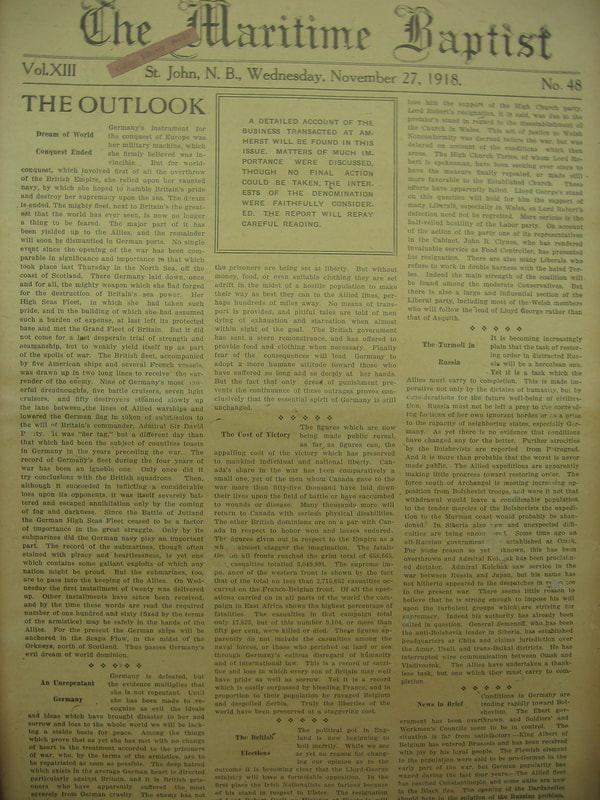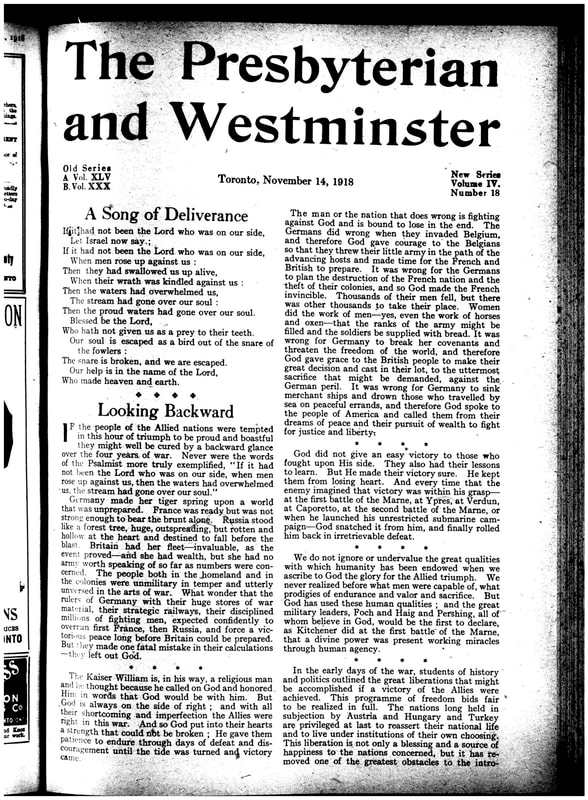|
My blog posts revolve around my interests and vocation as a historian: the intersection of history and contemporary church life, the intersection of history and contemporary politics, serendipitous discoveries in archives or on research trips, publications and research projects, upcoming conferences, and speaking engagements.
I sometimes blog for two other organizations, the Canadian Baptist Historical Society and the Centre for Post-Christendom Studies. The views expressed in these blogs represent the views of the authors, and not necessarily those of any organizations with which they are associated. |
|
One of my interests in life is reading old newspapers and seeing how people in the past responded to current events. As Remembrance Day approaches, here are some glimpses of how those in the past reacted to the end of one of the world’s worst conflicts. The following images remind us of many things, one being the enormous sacrifices made – may we never forget. After four and a half years of sacrifice and struggle, Canadian churches were elated and relieved with the announcement of victory in November 1918. The beginning of 1918 had looked gloomy, with Russia out of the war, Britain and France in the process of being bled dry, and a looming German offensive on the horizon. The only bright light was the hope that America’s entrance in the war would tip the scales on the side of the Entente Powers before they collapsed. By the end of 1918 Germany looked on the ropes, but few anticipated the sudden collapse of Germany, and the subsequent peace in November. The following newspaper images provide a picture of how four Protestant denominations announced the end of the war. Rather than interpret them, I will let them speak for themselves. This is just a glimpse of the various ways the churches responded, for the following months were filled with sermons, services, poems, hymns, prayers, resolutions, editorials, and articles all expressing joy over the victory – as well as optimism about a future without war[1]. Disillusionment would come in the interwar years[2], but hopes were high for a few months as the guns went eerily silent.
[1] For further reading on the Canadian churches and the war, see Melissa Davidson, “For God, King, and Country: The Canadian Churches and the Great War, 1914–1918, PhD dissertation, University of Ottawa, 2019; Mark G. McGowan, The Imperial Irish: Canada’s Irish Catholics Fight the Great War, 1914-1918 (Montreal/Kingston: McGill-Queens University Press, 2017); Gordon L. Heath, ed., Canadian Churches and the First World War (Eugene: Pickwick, 2014). [2] For instance, see Gordon L. Heath, “‘We Are Through with War’: The Rise and Fall of Pacifism among Canadian Baptists Between the Two World Wars,” Baptistic Theologies 9, 2 (2017): 37-53; Gordon L. Heath, “The Rise and Fall (and Resilience) of the Peace Movement among Presbyterians and the United Church in the Interwar Years, 1919-1939,” Canadian Society of Church History Papers, 2019; Gordon L. Heath, “Canadian Presbyterians and the Rejection of Pacifism in the Interwar Years, 1919-1939,” Journal of Presbyterian History (Fall 2020); Gordon L. Heath, “Postwar Pacifism, Trauma, and the Canadian Churchman, 1919-1939,” In Trauma and Survival in the Contemporary Church: Historical and Missional Responses, edited by Jonathan S. Lofft and Thomas P. Power (Cambridge Scholars Publishing, forthcoming).
0 Comments
Leave a Reply. |
Archives
May 2024
|





 RSS Feed
RSS Feed
